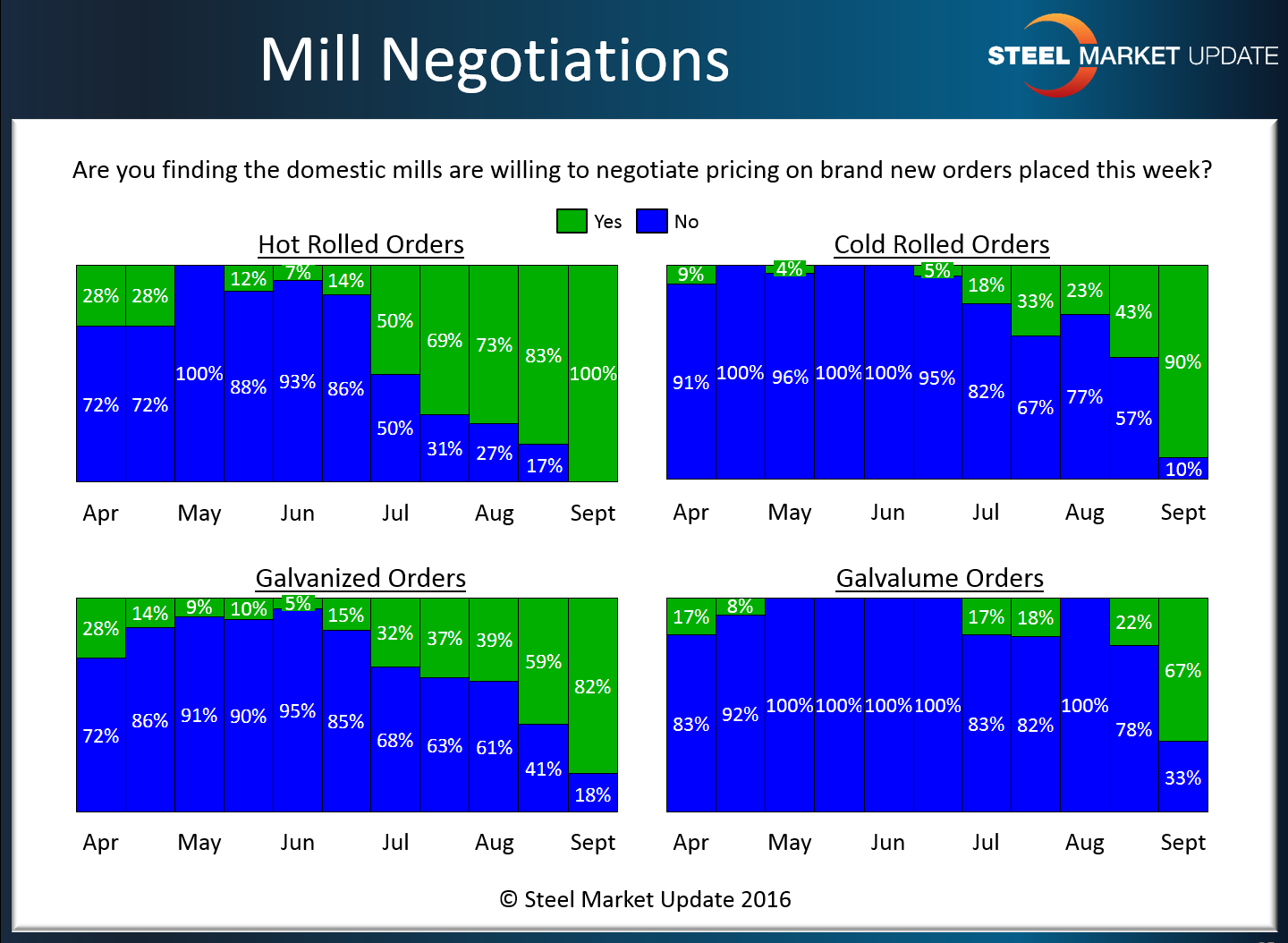SMU Data and Models

Steel Mills Willing to Negotiate Flat Rolled Spot Pricing
Written by John Packard
September 8, 2016
With lead times shrinking on hot rolled, cold rolled, galvanized and Galvalume steels it would be normal to collect data suggesting the domestic steel mills are becoming more negotiable on the spot pricing. The following information was gathered through our flat rolled steel market trends analysis over the past six days.
We found that the majority of our respondents were finding the domestic steel mills willing to negotiate pricing. The percentage of those responding that HRC was now negotiable went from 83 percent two weeks ago to 100 percent now.
Those reporting cold rolled as negotiable went from 43 percent to 90 percent.
Galvanized went from 59 percent to 82 percent and Galvalume from 22 percent to 67 percent.
Based on what we have found regarding lead times and now negotiations, we continue to believe that flat rolled prices will move lower from here and our Price Momentum Indicator continues to point toward lower spot pricing.
A side note: The data for both lead times and negotiations comes from only service center and manufacturer respondents. We do not include commentary from the steel mills, trading companies, or toll processors in this particular group of questions.
To see an interactive history of our Steel Mill Negotiations data, visit our website here.

John Packard
Read more from John PackardLatest in SMU Data and Models

SMU Survey: Sheet lead times ease further, plate hits one-year high
Steel buyers responding to this week’s SMU market survey report a continued softening in sheet lead times. Meanwhile, plate lead times have moderately extended and are at a one-year high.

SMU Survey: Buyers report more price flexibility from mills
Nearly half of the steel buyers responding to this week’s SMU market survey say domestic mills are showing increased willingness to negotiate pricing on new spot orders. This marks a significant shift from the firmer stance mills held in prior weeks.

SMU Survey: Buyers’ Sentiment Indices fall
Current Sentiment Index dropped six points to +42 this week compared to two weeks earlier. It has fallen in every successive survey since reaching a 2025 high of +66 on Feb. 19.

March service center shipments and inventories report
Steel service center shipments and inventories report through March 2024.

Apparent steel supply contracts in February
The amount of finished steel that entered the US market in February receded from January’s peak, according to our analysis of Department of Commerce and American Iron and Steel Institute (AISI) data.

